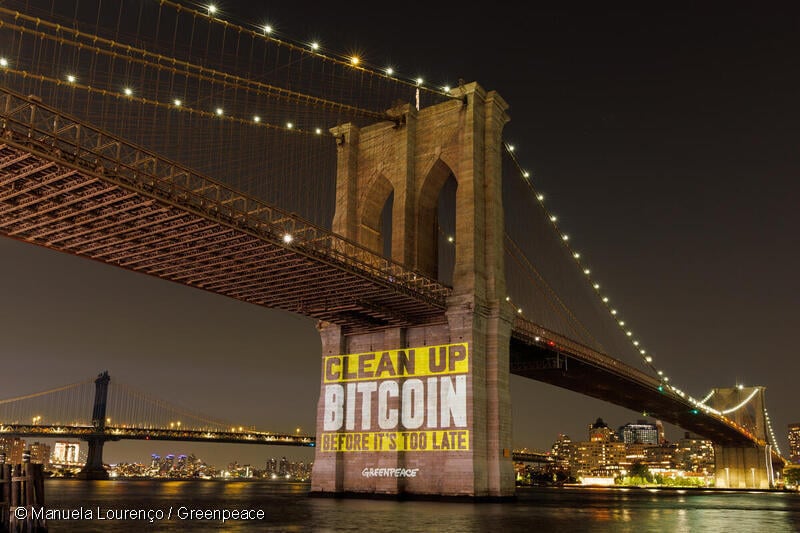Across the country, Bitcoin mining companies have tried to make families foot the bill for Bitcoin’s enormous energy consumption. Kentucky regulators’ recent decision to reject a cryptocurrency mining subsidy sends a powerful message that the needs of average energy consumers are more important than crypto profits.

Across the country, Bitcoin mining companies have tried to make families foot the bill for Bitcoin’s enormous energy consumption. Kentucky regulators’ recent decision to reject a cryptocurrency mining subsidy sends a powerful message that the needs of average energy consumers are more important than crypto profits.

This thought-provoking art installation is 11 feet tall and features smoking stacks representing the fossil fuel and coal pollution generated by Bitcoin mining, eyes adorned with bitcoin logos and red lasers, and cables protruding from its neck. The skull is made with electronic waste donated by Unirecycle, representing the millions of computers used to validate Bitcoin transactions, known as mining.
Washington, DC (August 31, 2023)– On Tuesday, Kentucky’s state utility regulator rejected a controversial proposal by Kentucky Power to give millions in energy price discounts to Ebon International’s proposed crypto mining facility in Louisa, Kentucky. In response to this decision, Joshua Archer, Greenpeace USA Bitcoin Campaign Lead, said: “Across the country, Bitcoin mining companies have tried to make families foot the bill for Bitcoin’s enormous energy consumption. Kentucky regulators’ recent decision to reject a cryptocurrency mining subsidy sends a powerful message that the needs of average energy consumers are more important than crypto profits. The proposed Bitcoin mine in Kentucky had the potential to burden ratepayers further at a time of growing energy prices and extend the Big Sandy gas plant’s life cycle until the distant year of 2041. This decision is a significant step forward, but Ebon International’s proposed mining facility remains a threat to our efforts to avert the worst consequences of climate change.”
“Bitcoin mining facilities cause enormous amounts of pollution and are a lifeline to the fossil fuel industry. Kentucky has taken a good first step to stop this one Bitcoin mine from exploiting and polluting a community. However, the real issue lies in Bitcoin’s energy-intensive consensus mechanism and the tactics utilized by Bitcoin miners. Until Bitcoin moves to a less energy-intensive code, companies like Ebon International will move from one community to another searching for more opportunities to exploit communities and delaying progress on climate change.”
###
Greenpeace USA is part of a global network of independent campaigning organizations that use peaceful protest and creative communication to expose global environmental problems and promote solutions that are essential to a green and peaceful future. Greenpeace USA is committed to transforming the country’s unjust social, environmental, and economic systems from the ground up to address the climate crisis, advance racial justice, and build an economy that puts people first. Learn more at www.greenpeace.org/usa.



